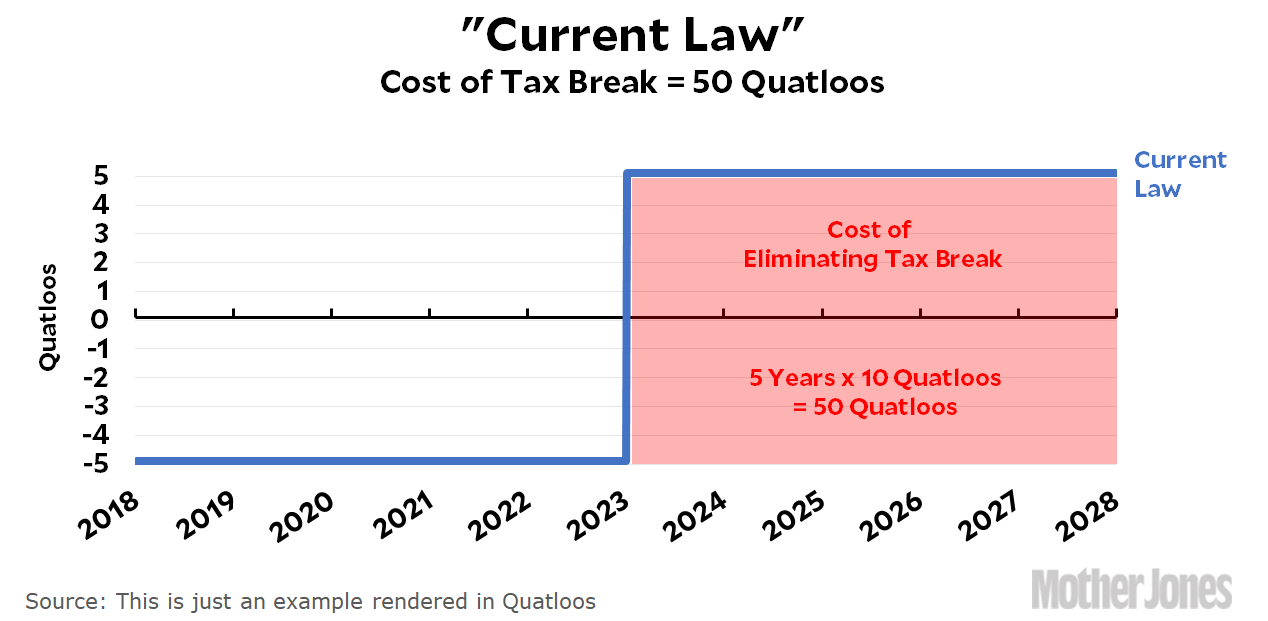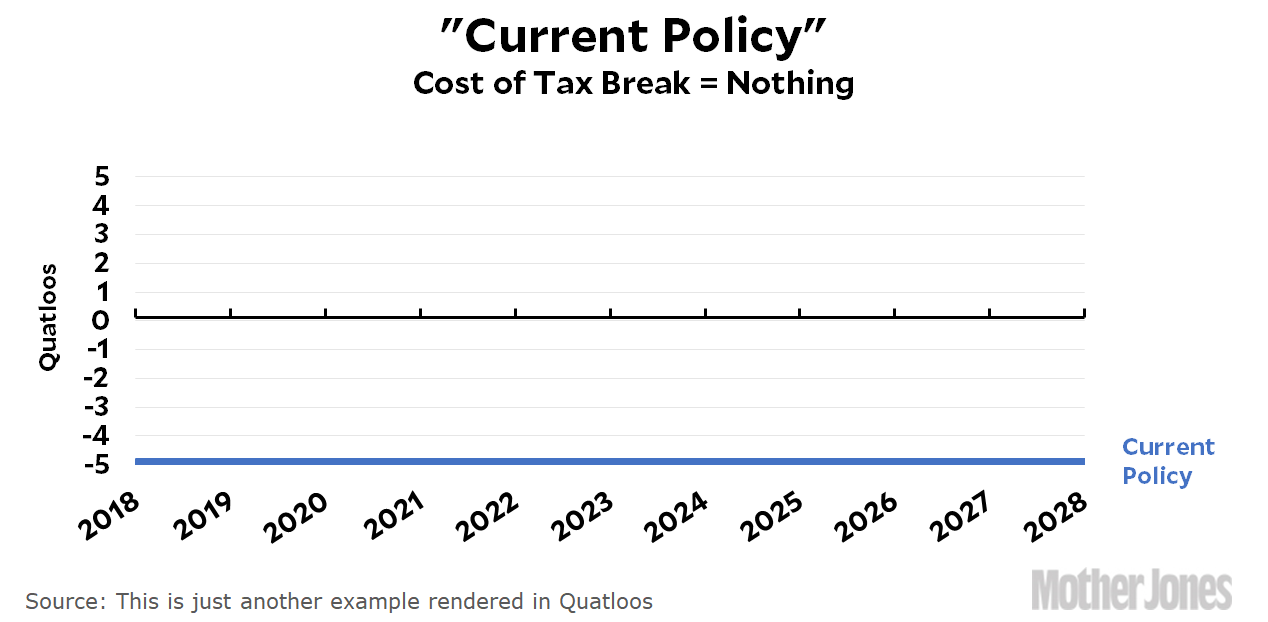Republicans are in a bind. They want to pass a tax bill, but (a) they don’t want to pay for it and (b) they want it to be permanent. Sadly, a combination of PAYGO and reconciliation rules¹ prevent this. What to do? One option is to design a bill that would get some Democratic support, and then pass a deficit-busting bill with 60 votes in the Senate. However, Republicans have no interest in working with Democrats, especially since Democrats would insist on a bill that doesn’t benefit the rich. That’s a nonstarter.
So they’re back to square one. Bloomberg reports on their latest brainstorm for sidestepping the rules:
Under the proposal, the GOP would not account for things like expiring tax breaks when gauging the budgetary impact of tax legislation — giving tax writers more room for cuts. Senate budget and tax panels are discussing the move to a “current policy” baseline — instead of the standard “current law” baseline — said the people who asked not to be identified because the discussions are private. The chief House tax writer, Kevin Brady, also signaled openness to the approach last month, saying it would lead to deeper tax cuts.
If you’re even close to normal, you’re thinking, “WTF does that mean?” That’s what I’m thinking anyway. But a couple of charts will help us work our way through this. Let’s suppose we have a tax break of five quatloos that expires halfway through the next decade. Starting in 2023, instead of saving five quatloos, you have to pay five quatloos. It looks like this:

If Republicans decide to extend the tax break, it will increase the deficit by 50 quatloos (5 years x 10 quatloos) compared to current law. This is, quite sensibly, how CBO scores things.
But wait! Suppose Republicans declare that their intention has always been to extend the tax break. In other words, current “policy” is that the tax break goes on forever. Then it looks like this:

The cost of extending the tax break is zero! Republicans are basically saying that since they planned to do this all along, it shouldn’t count against the baseline.
But here’s what I don’t get. This is obviously a fantasy, and it’s one that CBO will never go along with. In the real world, extending a tax break that’s scheduled to expire does indeed increase the deficit. So to do this, Republicans would have to overrule the CBO’s score of their bill.
But if they’re this determined to do what they want to do, why not cut the crap and simply instruct the Budget Committee to declare that their bill has no effect on the deficit? It doesn’t really matter how. Just assume enormous economic growth or something. The Budget Committee has final say over the score, so they can ignore CBO if they want. What’s the point of all this absurd rigamarole?
More here from CBPP if you’re interested.
¹Or, as Donald Trump put it last night, “It’s a trick.”













